IELTS Exam Pattern, Syllabus And Cutoff
- IELTS
-
Jan 27
- Share post
IELTS Highlights

The International English Language Testing System (IELTS) is a widely recognized test of English language proficiency for non-native speakers. It is used for educational and professional purposes, as well as for immigration and visa applications in certain countries.
IELTS has two versions: the Academic version, which is intended for those who want to study at the tertiary level or for professional registration, and the General Training version, which is intended for those who want to migrate to an English-speaking country or for those who want to train in a profession that does not require academic qualifications.
The test consists of four components: Listening, Reading, Writing, and Speaking. The Listening, Reading, and Writing sections are completed in one sitting and take a total of 2 hours and 45 minutes. The Speaking section can be completed either before or after the other sections and takes around 15 minutes.
The Listening section consists of 40 questions and four recordings, which include a conversation between two people, a monologue, and a conversation between several people. The Reading section includes three passages with 40 questions. The Writing section includes two tasks, one in which test-takers must write a minimum of 150 words in 20 minutes, and another in which test-takers must write a minimum of 250 words in 40 minutes. The Speaking section is conducted face-to-face with an examiner and consists of three parts: an introduction, a discussion of a topic, and a summary.
IELTS scores are reported on a band scale from 1 to 9, with 9 being the highest level of proficiency. Test-takers are given scores for each of the four components, as well as an overall band score.
One of the key highlights of IELTS is its international recognition. IELTS is recognized by over 10,000 organizations in more than 140 countries, including universities, professional bodies, employers, and immigration authorities. Additionally, IELTS is designed to test the skills required for real-life communication, making it a reliable indicator of English language proficiency.
Another highlight of IELTS is its flexibility. Test-takers can choose to take the test on paper or computer, and they can take the test at one of the many test centers located around the world. Additionally, the test is offered up to four times a month, providing test-takers with multiple options for scheduling.
IELTS also provides a variety of resources to help test-takers prepare for the test, including sample questions, practice tests, and study materials. These resources can be accessed on the official IELTS website and through authorized preparation centers.
In conclusion, IELTS is a widely recognized and respected test of English language proficiency that is used for a variety of purposes, including education, professional registration, and immigration. It tests the skills required for real-life communication and is recognized by over 10,000 organizations in more than 140 countries. Additionally, IELTS offers flexibility in terms of test format and scheduling, as well as a variety of resources to help test-takers prepare for the test.
IELTS Eligibility
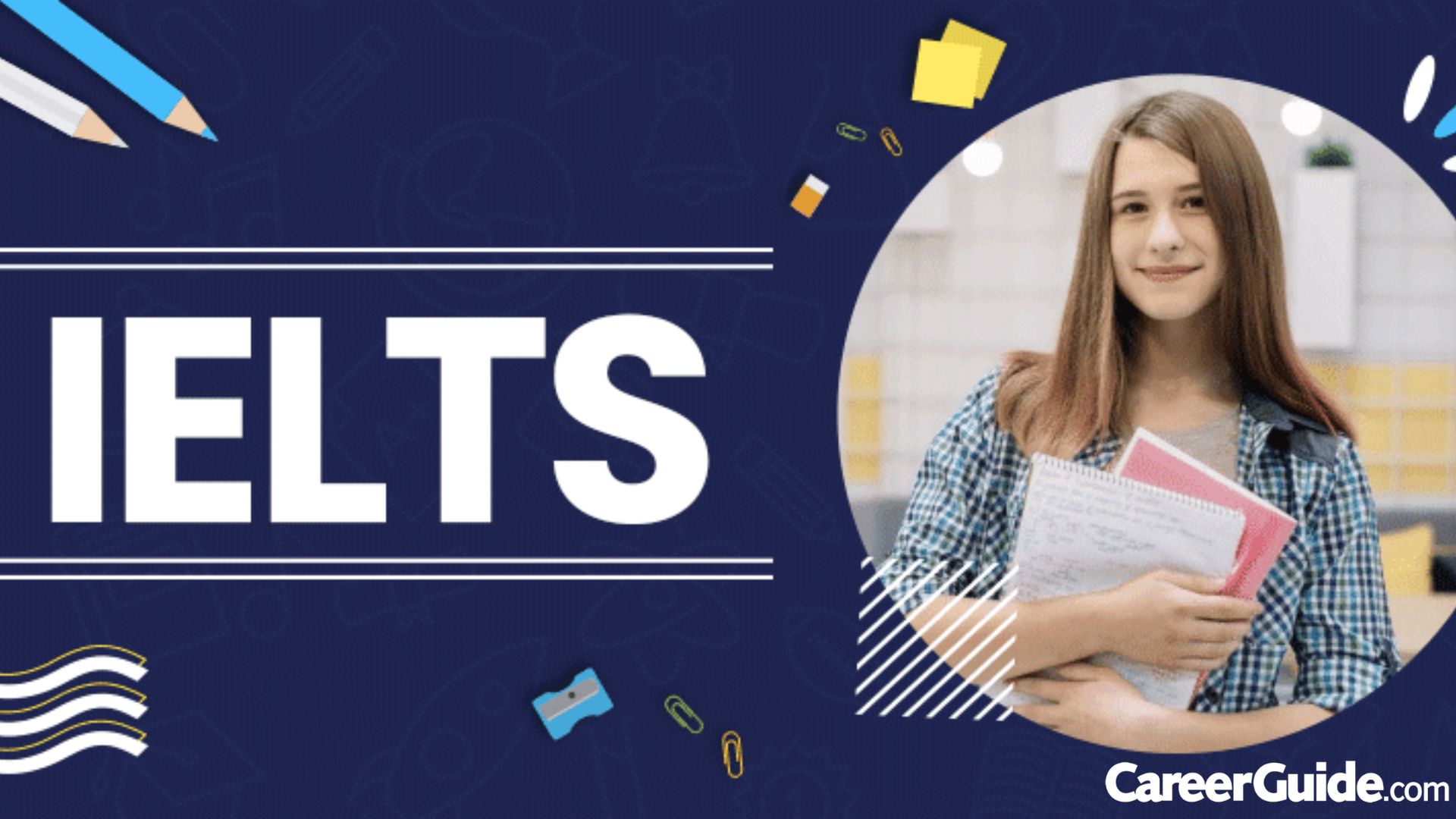
IELTS, or the International English Language Testing System, is a widely recognized test of English language proficiency for non-native speakers. It is used for educational and professional purposes, as well as for immigration and visa applications in certain countries. However, in order to take the IELTS test, there are certain eligibility requirements that must be met.
First and foremost, IELTS is intended for non-native speakers of English. This means that if you are a native speaker of English or have grown up in an English-speaking environment, you may not be eligible to take the test. In some cases, exceptions may be made for individuals who have spent a significant amount of time living and studying in a non-English speaking environment.
Additionally, IELTS test-takers must be at least 16 years of age on the day of the test. There is no upper age limit for taking the test.
In terms of educational requirements, there are no specific educational qualifications required in order to take the IELTS test. However, it is important to note that the test is intended for individuals who have a certain level of English language proficiency. Therefore, if you are not confident in your English language abilities, it may be beneficial to take a course or other form of preparation before taking the test.
There are also certain requirements in terms of identification and documentation that must be met in order to take the test. Test-takers must provide a valid government-issued ID, such as a passport or national ID card, on the day of the test. Additionally, test-takers must provide proof of their name and date of birth, such as a birth certificate or school ID. It is important to note that the name on your ID must match the name on your test registration, and you must bring the original ID on the test day.
It’s also important to note that IELTS test fee must be paid at the time of registration, and the test fee is non-refundable.
In conclusion, in order to be eligible to take the IELTS test, individuals must be non-native speakers of English, be at least 16 years of age, and provide valid identification and proof of name and date of birth. While there are no specific educational requirements, it is recommended that individuals have a certain level of English language proficiency before taking the test. Additionally, test fee must be paid and it’s non-refundable. It is important to carefully review the eligibility requirements and make sure you meet them before registering for the test.
IELTS Registration
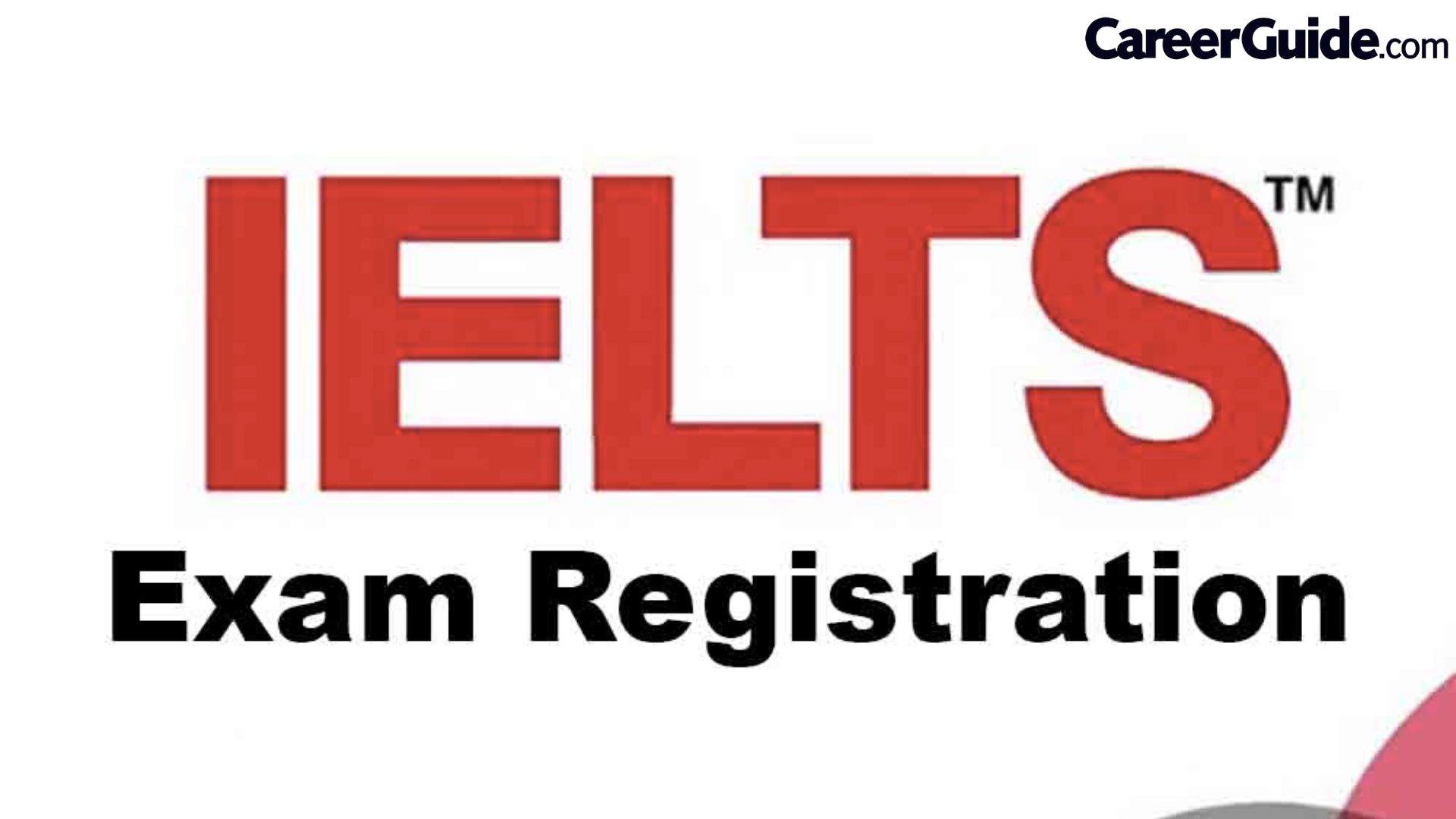
The International English Language Testing System (IELTS) is a widely recognized test of English language proficiency for non-native speakers. It is used for educational and professional purposes, as well as for immigration and visa applications in certain countries. To take the IELTS test, individuals must first register for the test.
The first step in registering for the IELTS test is to determine which version of the test is appropriate for your needs. The IELTS test has two versions: the Academic version, which is intended for those who want to study at the tertiary level or for professional registration, and the General Training version, which is intended for those who want to migrate to an English-speaking country or for those who want to train in a profession that does not require academic qualifications.
Once you have determined which version of the test is appropriate for your needs, you can register for the test. There are a few different ways to register for the IELTS test, including:
- Online: You can register for the IELTS test online by visiting the official IELTS website. This is the most common and convenient way to register for the test.
- By Phone: You can also register for the IELTS test by phone. You will need to contact your nearest IELTS test center to find out if this option is available.
- By Mail: You can also register for the IELTS test by mail. You will need to download the registration form from the official IELTS website and mail it to your nearest IELTS test center along with the required documents and payment.
- In-person: You can also register for the IELTS test in-person by visiting your nearest IELTS test center.
When registering for the test, you will need to provide some personal information, including your name, date of birth, contact information, and passport details (if you have one). You will also need to choose a test date and location. It’s important to keep in mind that test dates and locations fill up quickly, so you should register for the test as early as possible.
You will also need to pay the test fee at the time of registration. The test fee varies depending on the location and the test center. You can find the test fee for your location on the official IELTS website or by contacting your nearest test center. It’s important to note that the test fee is non-refundable.
In addition to the test fee, you will also need to provide proof of your name and date of birth, such as a birth certificate or school ID. It’s important to make sure that the name on your ID matches the name on your test registration.
Once you have completed the registration process and paid the test fee, you will receive a confirmation email or letter. This will include your test date, time, and location, as well as instructions for what to bring to the test center on the day of the test.
It’s important to keep in mind that there are certain eligibility requirements for taking the IELTS test, including being a non-native speaker of English, being at least 16 years of age, and providing valid identification and proof of name and date of birth. It is also recommended that individuals have a certain level of English language proficiency before taking the test.
In conclusion, registering for the IELTS test involves determining which version of the test is appropriate for your needs, and then registering online, by phone, by mail or in-person, providing personal information and passport details, choosing a test date and location, paying the test fee and providing proof of name and date of birth. It’s important to register as early as possible
IELTS Exam Fees
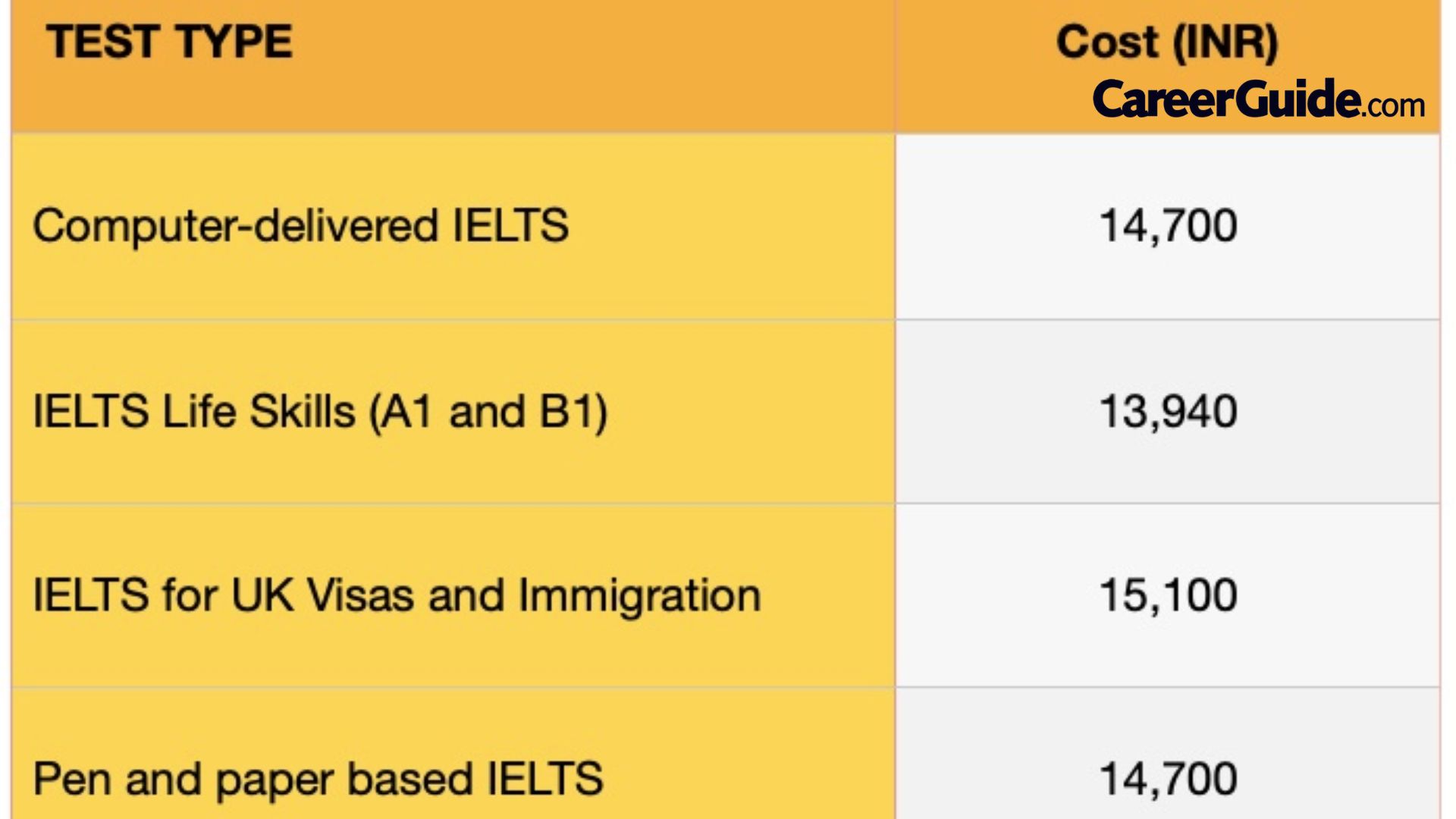
The International English Language Testing System (IELTS) is a widely recognized test of English language proficiency for non-native speakers. It is used for educational and professional purposes, as well as for immigration and visa applications in certain countries. One of the key aspects of taking the IELTS test is the cost, specifically the exam fee.
The cost of taking the IELTS test can vary depending on a number of factors, including the location of the test center, the test format (paper-based or computer-delivered), and whether you are taking the Academic or General Training version of the test.
In general, the cost of taking the IELTS test ranges from around $160 to $250 USD. The cost can be higher in certain countries or for certain test formats. For example, the cost of taking the computer-delivered test may be higher than the paper-based test.
It’s important to note that the test fee is non-refundable, meaning that if you decide not to take the test or if you are unable to take the test on the scheduled date, you will not be able to get a refund.
There are a few ways to pay the IELTS exam fee, including:
- Credit/Debit card
- Bank transfer
- Cash deposit
It is important to check with the test center for the available options as it varies from one test center to another.
It’s also worth mentioning that some test takers may be eligible for a reduced fee or a waiver of the test fee, such as in cases of financial hardship or for certain groups of people (e.g. refugees or asylum seekers). Eligibility and the process of applying for a reduced fee or a waiver will vary by test center, and it’s important to check with the test center directly to see if you qualify and how to apply.
In addition to the test fee, test takers may also need to pay additional fees for services such as rescheduling or canceling the test, requesting additional score reports, or applying for a remark or an appeal. These fees can vary depending on the test center and the service being requested.
In conclusion, the cost of taking the IELTS test can vary depending on factors such as location, test format, and test version. The cost of the test typically ranges from around $160 to $250 USD, but can be higher in certain countries or for certain test formats. Test takers should be aware that the test fee is non-refundable and that additional fees may apply for services such as rescheduling or canceling the test, requesting additional score reports, or applying for a remark or an appeal. Test takers should check with the test center directly for information on the cost of the test, payment options and if they are eligible for a reduced fee or wai
IELTS Exam Dates

The International English Language Testing System (IELTS) is a widely recognized test of English language proficiency for non-native speakers. It is used for educational and professional purposes, as well as for immigration and visa applications in certain countries. One of the key aspects of taking the IELTS test is choosing the right exam date.
IELTS test is offered up to four times a month, providing test-takers with multiple options for scheduling. The test is typically held on Saturdays and Thursdays, but the exact test dates can vary depending on the location of the test center. The test dates are usually posted on the official IELTS website several months in advance, and test centers also provide information about the test dates on their website or by phone.
It’s important to note that test dates and locations fill up quickly, so you should register for the test as early as possible. It is recommended to register for the test at least four to six weeks before your desired test date. This will ensure that you have enough time to prepare for the test and that you can secure a spot on the test date of your choice.
Test-takers can also choose to take the test on paper or computer, and they can take the test at one of the many test centers located around the world. However, it’s important to note that not all test centers offer both the paper-based and computer-delivered test. Therefore, test-takers should check with their nearest test center to see which test format is offered and when.
It’s also important to note that some test centers have specific test dates for the computer-delivered test, while others may offer it on a more regular basis. Therefore, test-takers should check with their nearest test center to see when the computer-delivered test is offered.
In addition to the regular test dates, some test centers may also offer additional test sessions at different times of the year. For example, some test centers may offer additional test sessions during peak periods, such as the summer or around the holidays. Test-takers should check with their nearest test center to see if additional test sessions are offered and when they are scheduled.
It’s also worth mentioning that some test takers may have specific requirements, such as taking the test on a specific date or at a specific time. In such cases, test takers should check with their nearest test center to see if they can accommodate these requirements.
In conclusion, IELTS test is offered up to four times a month on Saturdays and Thursdays but the exact test dates can vary depending on the location of the test center. The test dates are usually posted on the official IELTS website several months in advance, and test centers also provide information about the test dates on their website or by phone. Test-takers should register for the test as early as possible, at least four to six weeks before their desired test date, to ensure that they can secure a spot on the test date of their choice. Test takers can choose to take the test on paper or computer, and they can take the test at one of the many test centers located around the world, but not all test centers offer both the paper-based and computer-delivered test. Some test centers may also offer additional test sessions at different times of the year. Test-takers should check with their nearest test center for more information on the test dates, format and additional sessions.
IELTS Exam Pattern
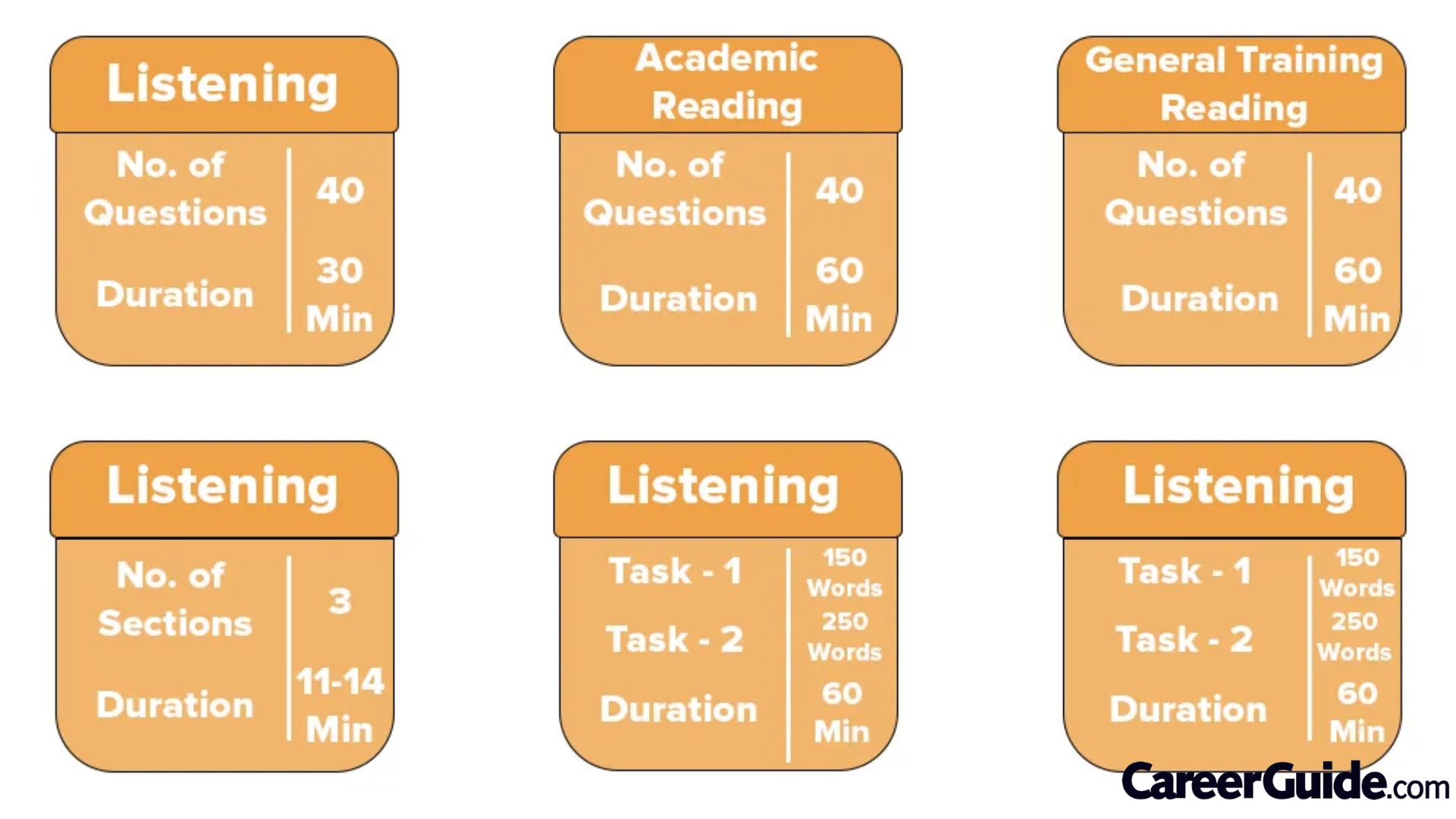
The International English Language Testing System (IELTS) is a widely recognized test of English language proficiency for non-native speakers. It is used for educational and professional purposes, as well as for immigration and visa applications in certain countries. One of the key aspects of taking the IELTS test is understanding the exam pattern.
The IELTS test is divided into four components: Listening, Reading, Writing, and Speaking. The Listening, Reading, and Writing sections are completed in one sitting and take a total of 2 hours and 45 minutes. The Speaking section can be completed either before or after the other sections and takes around 15 minutes.
The Listening section consists of 40 questions and four recordings, which include a conversation between two people, a monologue, and a conversation between several people. The recordings are played once and test-takers are given time to read the questions before each recording is played. The questions are designed to test a range of listening skills, including understanding main ideas, details, opinions, attitudes, and purpose.
The Reading section includes three passages with 40 questions. The passages are taken from books, magazines, newspapers, and journals and are written for a non-specialist audience. The questions are designed to test a range of reading skills, including understanding main ideas, details, opinions, attitudes, and purpose.
The Writing section includes two tasks. In the first task, test-takers must write a minimum of 150 words in 20 minutes. The task is based on a visual or a diagram, such as a graph, chart, table, or a combination of these. Test-takers must describe, summarize or explain the information presented in the visual. In the second task, test-takers must write a minimum of 250 words in 40 minutes. The task is an essay on a general topic, such as an opinion, argument, or problem-solution.
The Speaking section is conducted face-to-face with an examiner and consists of three parts: an introduction, a discussion of a topic, and a summary. The introduction part is a general conversation between the test-taker and the examiner to find out the test-taker’s background and interests. The discussion part is a conversation between the test-taker and the examiner about a topic provided by the examiner. The summary part is a one-minute monologue, in which test-taker gives a summary of the discussion.
IELTS scores are reported on a band scale from 1 to 9, with 9 being the highest level of proficiency. Test-takers are given scores for each of the four components, as well as an overall band score. Each of the four components (Listening, Reading, Writing, and Speaking) is scored separately. The scores for each component are then averaged to give an overall band score.
It’s important to note that the IELTS test is designed to test the skills required for real-life communication, making it a reliable indicator of English language proficiency. The test is designed to be challenging, and test-takers should be prepared to demonstrate a high level of proficiency in all four skills.
In conclusion, IELTS test is divided into four components: Listening, Reading, Writing, and Speaking. The Listening section consists of 40 questions and four recordings, The Reading section includes three passages with 40 questions. The Writing section includes two tasks, one in which test
IELTS Score
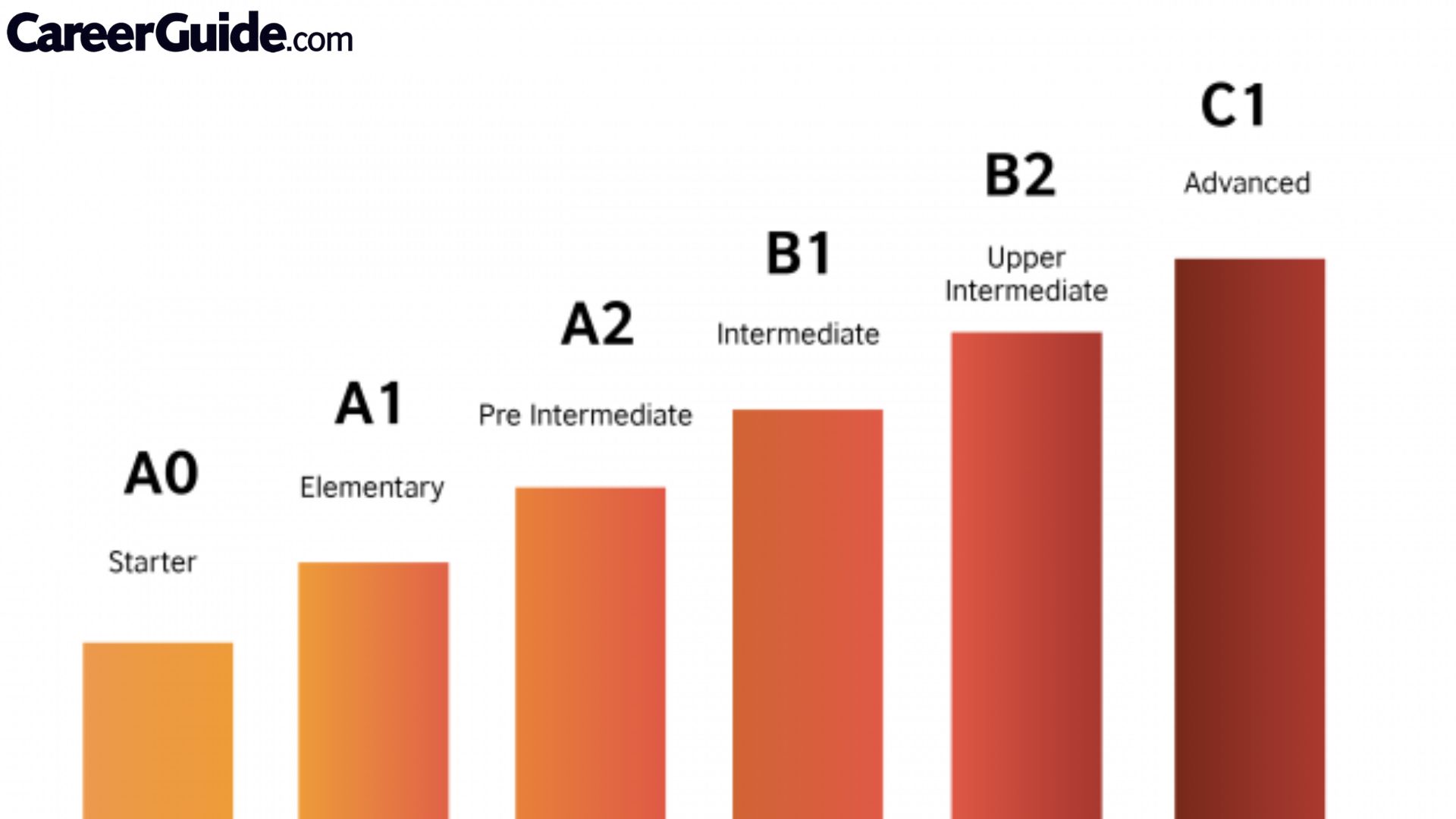
The International English Language Testing System (IELTS) is a widely recognized test of English language proficiency for non-native speakers. It is used for educational and professional purposes, as well as for immigration and visa applications in certain countries. One of the key aspects of taking the IELTS test is understanding the scoring system.
IELTS scores are reported on a band scale from 1 to 9, with 9 being the highest level of proficiency. The band scores are designed to be equivalent across all four language skills: Listening, Reading, Writing, and Speaking. Test-takers are given scores for each of the four components, as well as an overall band score. Each of the four components (Listening, Reading, Writing, and Speaking) is scored separately. The scores for each component are then averaged to give an overall band score.
The band scores are based on a set of descriptors that define what a test-taker can do at each level. These descriptors are based on the Common European Framework of Reference for Languages (CEFR). The band scores are defined as follows:
- Band 9: Expert User – Has fully operational command of the language: appropriate, accurate and fluent with complete understanding
- Band 8: Very Good User – Has fully operational command of the language with only occasional unsystematic inaccuracies and inappropriacies. Misunderstandings may occur in unfamiliar situations. Handles complex detailed argumentation well.
- Band 7: Good User – Has operational command of the language, though with occasional inaccuracies, inappropriacies and misunderstandings in some situations. Generally handles complex language well and understands detailed reasoning.
- Band 6: Competent User – Has generally effective command of the language despite some inaccuracies, inappropriacies and misunderstandings. Can use and understand fairly complex language, particularly in familiar situations.
- Band 5: Modest User – Has partial command of the language, coping with overall meaning in most situations, though is likely to make many mistakes. Should be able to handle basic communication in own field.
- Band 4: Limited User – Basic competence is limited to familiar situations. Has frequent problems in understanding and expression. Is not able to use complex language.
- Band 3: Extremely Limited User – Conveys and understands only general meaning in very familiar situations. Frequent breakdowns in communication occur.
- Band 2: Intermittent User – No real communication is possible except for the most basic information using isolated words or short formulae in familiar situations and to meet immediate needs. Has great difficulty understanding spoken and written English.
- Band 1: Non-User – Essentially has no ability to use the language beyond possibly a few isolated words.
It’s important to note that the IELTS test is designed to test the skills required for real-life communication, making it a reliable indicator of English language proficiency. The test is designed to be challenging, and test-takers should be prepared to demonstrate a high level of proficiency in all four skills.
IELTS Result

IELTS, the International English Language Testing System, is a standardized test that measures a person’s proficiency in the English language. It is used as a requirement for study, work, or immigration in many countries. The test consists of four sections: listening, reading, writing, and speaking. Each section is scored on a scale of 1-9, with 9 being the highest level of proficiency.
The listening section consists of four recorded passages, each followed by a series of questions. The passages range in difficulty and cover a variety of topics such as social, academic, and training contexts. The test-taker must demonstrate the ability to understand the main ideas, details, and opinions expressed in the passages.
The reading section consists of three passages, each followed by a series of questions. The passages range in difficulty and cover a variety of topics such as social, academic, and training contexts. The test-taker must demonstrate the ability to understand the main ideas, details, and opinions expressed in the passages.
The writing section consists of two tasks. In the first task, the test-taker must write a 150-word essay in response to a given prompt. In the second task, the test-taker must write a 250-word essay in response to a given prompt. The test-taker must demonstrate the ability to write coherently, cohesively, and accurately, using a range of grammar and vocabulary.
The speaking section is conducted face-to-face with a certified IELTS examiner. The test-taker must demonstrate the ability to speak fluently, accurately, and appropriately in a range of situations. The test is divided into three parts: an introduction and interview, a cue card task, and a discussion.
Overall, IELTS results are calculated as an average of the scores achieved in each of the four sections. The scores are rounded to the nearest whole or half band. The minimum overall score required for passing the test varies depending on the institution or organization that is requiring it.
It is important to note that the IELTS test is designed to test the language proficiency of non-native speakers, and therefore the test is challenging even for those with a high level of English proficiency. It is also important to note that the test is designed to test a range of language skills, including listening, reading, writing and speaking, so even if one scores high in one area, it doesn’t guarantee a high overall score.
In order to prepare for the test, test-takers can take practice tests, familiarize themselves with the format of the test, and work on improving their language skills in the areas where they are weaker. Additionally, some test-takers may benefit from taking an IELTS preparation course, which can provide targeted instruction and feedback on specific language skills.
Overall, IELTS results are an important measure of one’s language proficiency in English. It is used as a requirement for study, work, or immigration in many countries. The test is challenging, but with proper preparation, test-takers can achieve the scores they need to reach their goals.
IELTS Cutoff
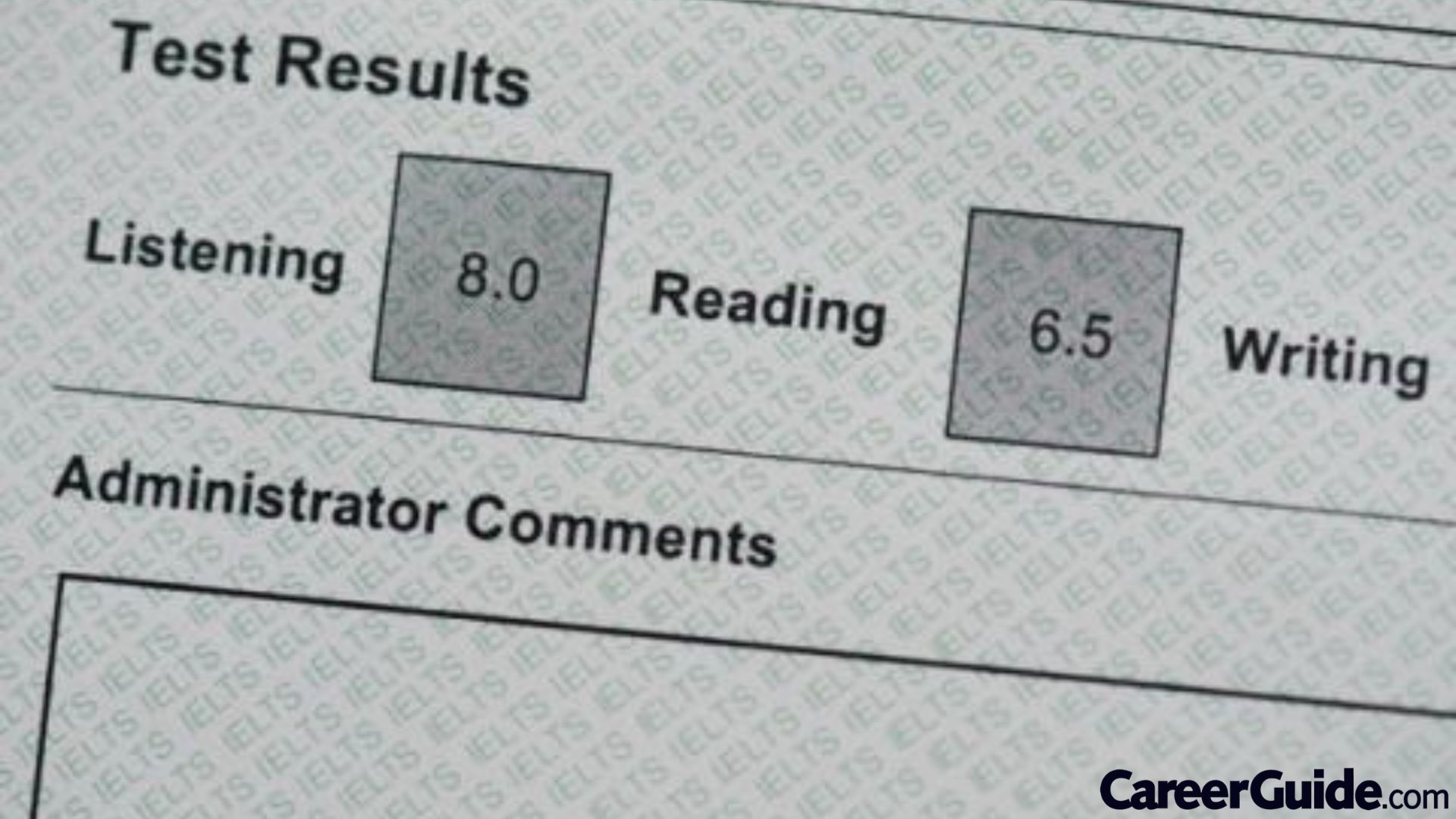
IELTS, the International English Language Testing System, is a standardized test that measures a person’s proficiency in the English language. It is used as a requirement for study, work, or immigration in many countries. The test is scored on a scale of 1-9, with 9 being the highest level of proficiency.
A cutoff score, also known as a minimum score requirement, is the lowest score that an institution or organization will accept as meeting their English language proficiency requirement. The cutoff score varies depending on the institution or organization and the level of study or program the test-taker is applying for.
For example, universities and colleges may have different cutoff scores for undergraduate and graduate programs. Similarly, different countries may have different cutoff scores for immigration purposes.
It is important to note that the cutoff score is not the same as a passing score. A passing score is the minimum score required to pass the IELTS test, which is generally set at 6.0. However, a cutoff score is the minimum score required by the institution or organization to which the test-taker is applying.
For example, some universities may have a cutoff score of 6.5 or 7.0 for undergraduate programs, while others may have a cutoff score of 7.5 or 8.0 for graduate programs. Similarly, some countries may have a cutoff score of 6.5 or 7.0 for immigration purposes, while others may have a cutoff score of 7.5 or 8.0 for certain types of visas.
It’s also important to note that some institutions or organizations may have different cutoff scores for different sections of the IELTS test. For example, a university may require a minimum score of 6.0 in the listening and reading sections, 6.5 in the writing section, and 7.0 in the speaking section for an undergraduate program.
It’s important for test-takers to research the cutoff scores required by the institutions or organizations to which they are applying and to aim for a score that is higher than the required cutoff. This will increase their chances of being accepted into the program or being granted the visa.
In addition, test-takers should also keep in mind that their overall score is not the only factor considered for acceptance or visa grant. Institutions and organizations may also take into consideration other factors such as the test-taker’s academic and professional background, work experience, and overall qualifications.
In conclusion, a IELTS cutoff score is the lowest score that an institution or organization will accept as meeting their English language proficiency requirement. It varies depending on the institution or organization and the level of study or program the test-taker is applying for. It’s important for test-takers to research the cutoff scores required by the institutions or organizations to which they are applying and to aim for a score that is higher than the required cutoff.
IELTS Scholarships

IELTS, the International English Language Testing System, is a standardized test that measures a person’s proficiency in the English language. It is used as a requirement for study, work, or immigration in many countries. Many universities and organizations around the world offer scholarships to students who have taken and performed well on the IELTS test.
IELTS scholarships can be of various types, such as merit-based scholarships for high-performing students, need-based scholarships for financially disadvantaged students, and scholarships for students from specific countries or regions. The scholarships are usually awarded to students who are applying to study at the undergraduate or graduate level, although some organizations may also offer scholarships for vocational or professional training programs.
The criteria for awarding IELTS scholarships may vary depending on the institution or organization offering the scholarship. Some scholarships may be based on the overall IELTS score, while others may be based on scores in specific sections of the test, such as listening, reading, writing, and speaking. Some scholarships may also be based on the test-taker’s performance in other academic or professional qualifications, such as high school or college grades, or work experience.
The value of IELTS scholarships also varies depending on the institution or organization. Some scholarships may cover the full cost of tuition and living expenses, while others may provide only partial funding. Some scholarships may be renewable for multiple years, while others may be awarded for a single academic term or year.
To find and apply for IELTS scholarships, students can research the websites of universities and organizations that they are interested in, and look for information about scholarships and financial aid. Many universities and organizations have dedicated sections on their websites that provide information about the scholarships they offer, the application process, and the required documents.
In addition, students can also check for scholarships through the British Council, which is the organization that administers the IELTS test in many countries around the world. The British Council offers a range of scholarships for students who are planning to study in the United Kingdom and other English-speaking countries.
It’s important for students to research the scholarships that are available to them, and to check the application deadlines and requirements carefully. They should also read the terms and conditions of the scholarship carefully, and ensure that they meet the eligibility criteria before applying.
In addition to scholarships, students may also be eligible for other forms of financial aid, such as loans or grants. Some universities and organizations also offer work-study programs, which allow students to work part-time on campus to help cover the cost of their education.
In conclusion, IELTS scholarships are a great way for students to study abroad in English-speaking countries by helping them to cover the cost of tuition and living expenses. These scholarships are offered by many universities and organizations around the world and have different criteria, value, and terms, depending on the institution or organization offering the scholarship. Students should research the scholarships that are available to them and check the application deadlines and requirements carefully, in order to increase their chances of being awarded a scholarship
IELTS Preparation Tips
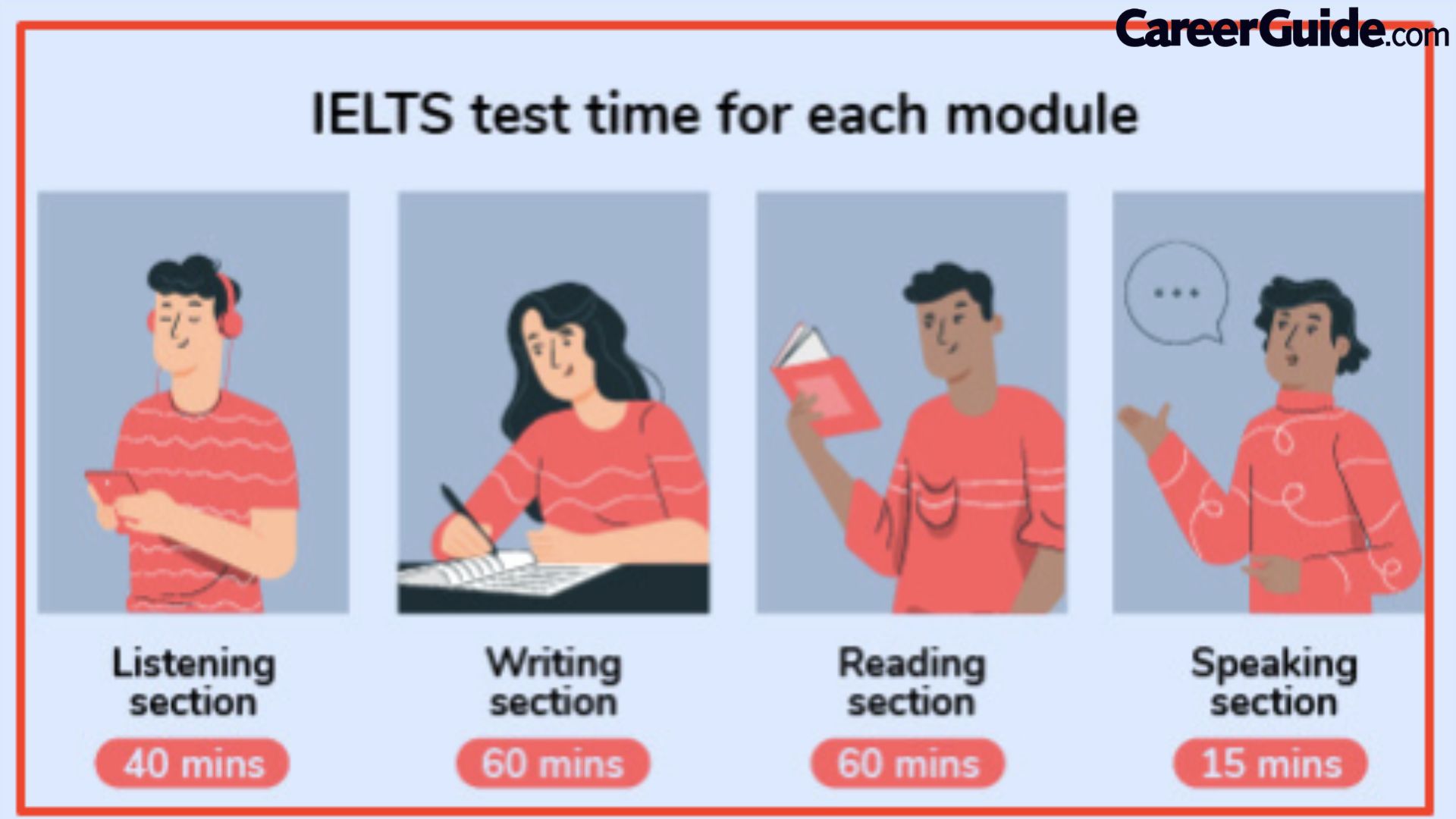
Preparing for the International English Language Testing System (IELTS) can be a daunting task, but with the right approach and resources, it is possible to achieve a high score on the test. The IELTS test measures a person’s proficiency in the English language, and is used as a requirement for study, work, or immigration in many countries.
- Understand the test format: One of the most important steps in preparing for the IELTS test is to familiarize yourself with the format of the test. The IELTS test consists of four sections: listening, reading, writing, and speaking. Each section is scored on a scale of 1-9, with 9 being the highest level of proficiency. Understanding the format of the test will help you to prepare more effectively and to focus on the areas where you need to improve.
- Practice with sample test materials: Many organizations, such as the British Council, provide sample test materials that can be used to practice for the IELTS test. These materials include sample listening and reading passages, sample writing tasks, and sample speaking prompts. Practice with these materials will help you to become familiar with the types of questions and tasks that will be included on the test.
- Focus on your language skills: The IELTS test measures your proficiency in the English language, so it is important to focus on improving your language skills. This includes practicing your grammar, vocabulary, and listening and reading comprehension. There are many resources available online and offline, such as books, websites, and apps, that can help you to improve your language skills.
- Get feedback on your writing and speaking: Writing and speaking are two important components of the IELTS test. To prepare for these sections, it is important to get feedback on your writing and speaking. This can be done by working with a tutor, taking an IELTS preparation course, or by joining an online community where you can share your writing and speaking samples.
- Time management: The IELTS test is timed, so it is important to practice managing your time effectively. This means setting aside enough time to complete each section of the test, and also ensuring that you have enough time to review and check your answers.
- Take a full-length practice test: Taking a full-length practice test is an excellent way to prepare for the IELTS test. This will give you an idea of how much time you will need to complete each section of the test, and will also help you to identify areas where you need to improve.
- Stay calm and focused: The IELTS test can be stressful, but it is important to stay calm and focused during the test. This means avoiding last-minute cramming, getting a good night’s sleep before the test, and staying positive and motivated throughout the test.
- Take an IELTS preparation course: An IELTS preparation course is an excellent way to prepare for the test. These courses are usually taught by experienced teachers who are familiar with the test format and the types of questions that will be included on the test. The courses also provide targeted instruction and feedback on specific language skills.
- Get familiar with the accent: The listening section of the IELTS test includes recordings of native speakers from various English-speaking countries. Getting familiar with different accents can help you to understand the recordings better during the test.
- Learn strategies for the test: There are specific strategies that you can use to help you perform well on the IELTS test. These strategies include skimming and scanning, guessing meaning from context, and identifying key words in reading and listening passages.
MBA Exams
Top Searches
Jee Mains
Jee Advance
STUDENTS
- For 9th class
- Skill Based Career Test |
- Services |
- Basic Plan |
- Advance Plan |
- Video Counselling Plan |
- Mentorship Plan
- For 10th class
- Stream Selector Test |
- Ideal Career Test |
- Services |
- Basic Plan |
- Advance Plan |
- Video Counselling Plan |
- Mentorship Plan
- For 11th class
- Ideal Career Test |
- Engineering Branch Selector |
- Humanities Career Selector |
- Commerce Career Selector |
- Services |
- Basic Plan |
- Advance Plan |
- Video Counselling Plan|
- Mentorship Plan
- For 12th class
- Ideal Career Test |
- Engineering Branch Selector |
- Humanities Career Selector |
- Commerce Career Selector |
- Services |
- Basic Plan |
- Advance Plan |
- Video Counselling Plan |
- Mentorship Plan
- For B.Com
- Commerce Career Selector |
- Ideal Career Test |
- Services |
- Basic Plan |
- Advance Plan |
- Video Counselling Plan |
- Mentorship Plan
- For B.Sc
- Ideal Career Test |
- Professional Skill Index Test |
- Services |
- Basic Plan |
- Advance Plan |
- Video Counselling Plan |
- Mentorship Plan
- For B.Tech
- Ideal Career Test |
- Professional Skill Index Test |
- Services |
- Basic Plan |
- Advance Plan |
- Video Counselling Plan |
- Mentorship Plan
- For B.A
- Ideal Career Test |
- Humanities Career Selector |
- Professional Skill Index Test |
- Services |
- Basic Plan |
- Advance Plan |
- Video Counselling Plan |
- Mentorship Plan
- For MBA
- Ideal Career Test |
- Professional Skill Index Test |
- Services |
- Basic Plan |
- Advance Plan |
- Video Counselling Plan |
- Mentorship Plan
- For Masters
- Professional Skill Index Test |
- Services |
- Basic Plan |
- Advance Plan |
- Video Counselling Plan |
- Mentorship Plan
STUDY ABROAD






Copyright © CareerGuide.com
Build Version:- 1.0.0.0
- X
- Telegram
- Tumblr
- VKontakte
- Copy link
- Share via...